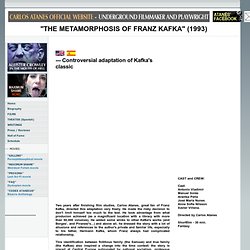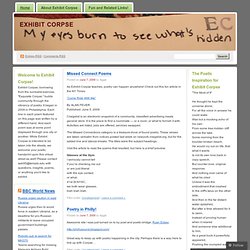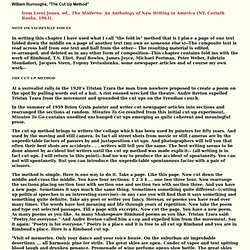

The New Value of Text. There is an increasingly pervasive notion that other forms of media are additive to literature, that they somehow improve it.

Because, you know, books are just telling stories, right? We are witnessing a profound assault on book publishing and literature, on the text itself—not from ebooks, which publishers are slowly, painfully coming around to after a long resistance, or the internet, which is after all entirely made of text—but from applications, “enhanced” books and reductive notions of literary experience. As I’ve written about before, in the context of advertising, publishers’ reactions to new technologies betray a profound lack of confidence in the text itself.
We are being distracted by shiny things. Text lasts. Yet we are terrified that in the digital age, people are constantly distracted. “Storytelling” is what we do for children. Chapter5. Film: A Midsummer Night's Dream (Shakespeare Retold, 2005) THE METAMORPHOSIS OF FRANZ KAFKA - FILM ADAPTATION. Two years after finishing film studies, Carlos Atanes, great fan of Franz Kafka, directed this adaptation very freely.

He made the risky decision to don't limit himself too much to the text. He took advantage from what producion achieved (as a magnificent location with a library with more than 60,000 volumes). He added some winks to other Kafka's works (and Borges', and Piranesi's...) and above all, he dressed the story with a lot of allusions and references to the author's private and familar life, especially to his father, Hermann Kafka, whom Franz always had complicated relationship. This identification between fictitious family (the Samsas) and true family (the Kafkas) also inspired a change into the time context: the story is placed at Central Europe subjugated by national socialism, grotesque regime that Franz Kafka didn't know, but it was what, some years after his death, annihilated his family.
Fifteen years later ... The Jefferson Bible, National Museum of American History, Smithsonian Institution. Exquisite corpse. Exhibit Corpse. He thought he kept The heart of his lover on his left side.

Burning and transforming Flowers and butterflies Sink to the surface Bubbles are not heavy. Exquisite Corpse. Burroughs-cutup. In writing this chapter I have used what I call "the fold in" method that is I place a page of one text folded down the middle on a page of another text (my own or someone else's)--The composite text is read across half from one text and half from the other-- The resulting material is edited, re-arranged, and deleted as in any other form of composition--This chapter contains fold ins with the work of Rimbaud, T.S.

TDMCC Meta Mashup. Intermission: Ice Cube Lays Down Architectural Wisdom - Design. Lessig_FOI. Mashup: A Fair Use Defense. Mashup, a style of music that combines samples from various songs, would appear to many to be the epitome of copyright infringement.

In fact, a 2005 court case, Bridgeport v. Dimension, deemed the unauthorized use of even one second of a sample to be copyright infringement. Since mashup blends several samples over the course of any one song, it must certainly be copyright infringement. Right? Not so fast. Judges do make mistakes, and no court decision is set in stone, so it is worth considering whether a legitimate legal defense could be made on behalf of the mashup artist. Fair use is a legal doctrine meant to protect works deemed valuable for society, often shielding works involving first amendment expression, such as parodies. I will now show one reason why mashup could be considered fair use.
For this hypothetical fair use defense, let’s delve into the transformative nature of mashup music. Nonetheless, mashup can be incredibly transformative for another important reason. The Lyceum. The Glass Box And The Commonplace Book. The following is a transcript of the Hearst New Media lecture I gave last night at Columbia University, subtitled "Two Paths For The Future of Text.

" Thanks to everyone who came out, and to the Journalism school for the invitation. I want to start with a page out of history—the handwriting of Thomas Jefferson, taken from one of his notebooks on religion. The words on this page belongs to a long and fruitful tradition that peaked in Enlightenment-era Europe and America, particularly in England: the practice of maintaining a “commonplace” book. Scholars, amateur scientists, aspiring men of letters—just about anyone with intellectual ambition in the seventeenth and eighteenth centuries was likely to keep a commonplace book. In its most customary form, “commonplacing,” as it was called, involved transcribing interesting or inspirational passages from one’s reading, assembling a personalized encyclopedia of quotations.
Steven Johnson and the modern day commonplace book. Steven Johnson, author of The Ghost Map, has posted the transcript of a fascinating lecture about the practice of "commonplacing" and the implications of new reading technology on sharing and remixing digital text.

During the Enlightenment, scholars and thinkers usually kept a "commonplace book," or research scrapbook where they transcribed interesting passages of things they read, augmented with their own notes. You can see the obvious parallels to modern media. Commonplace books.